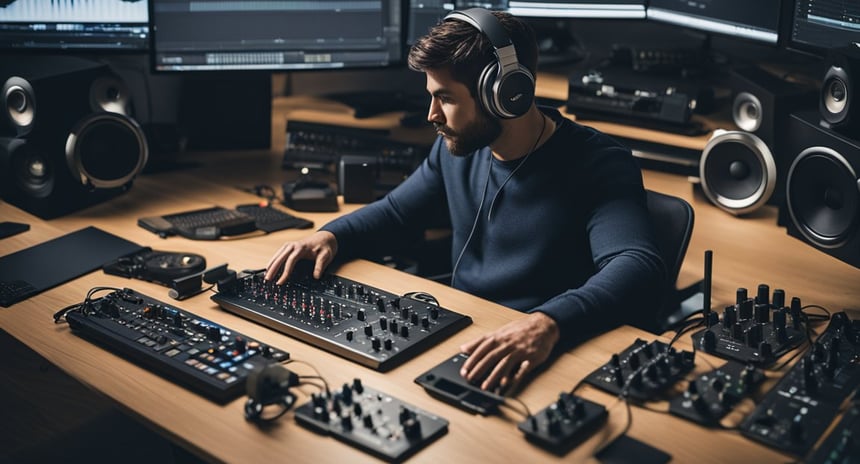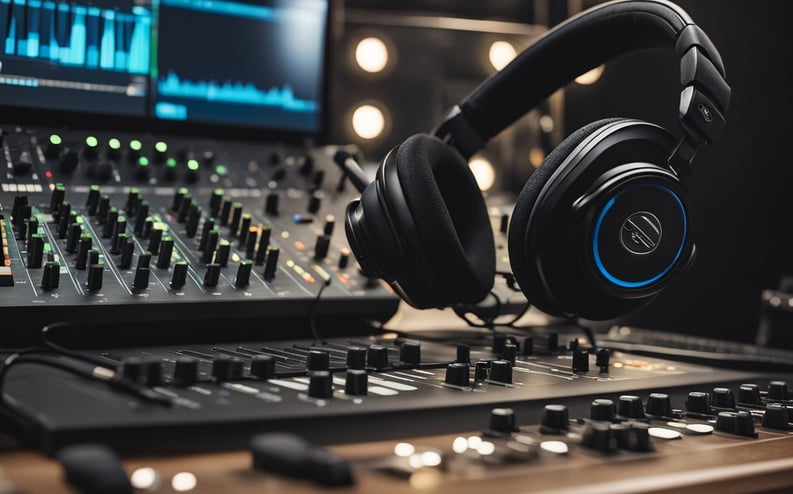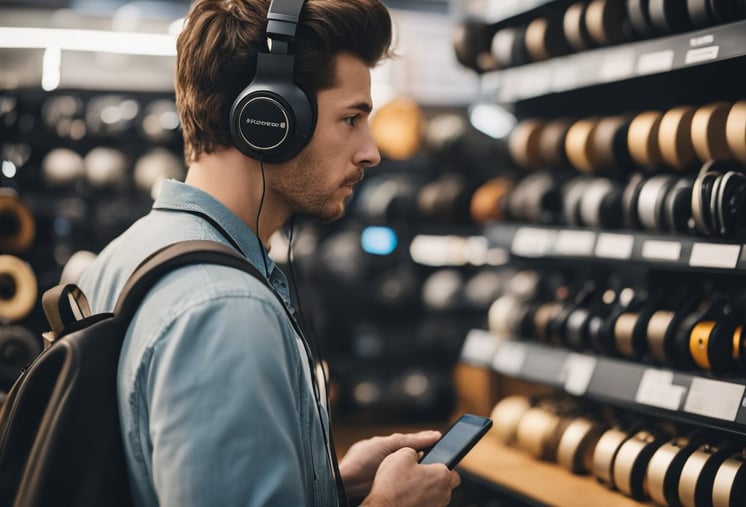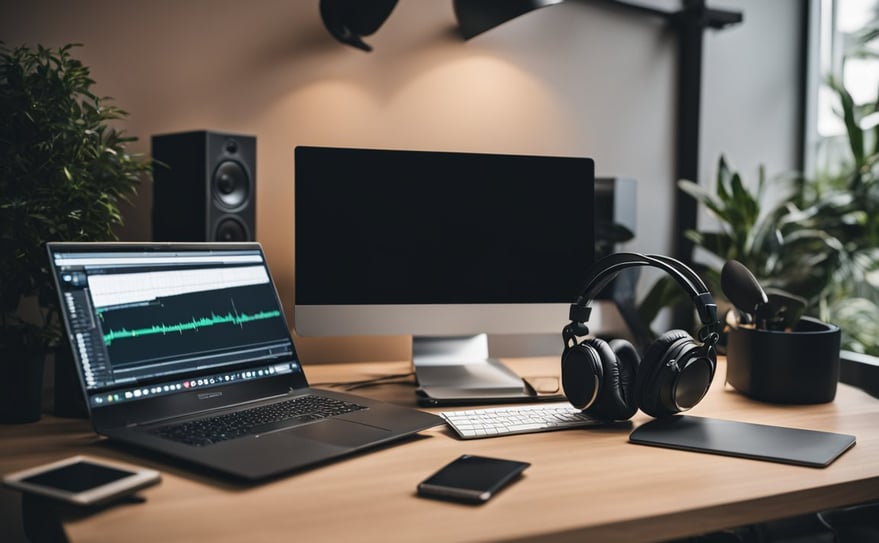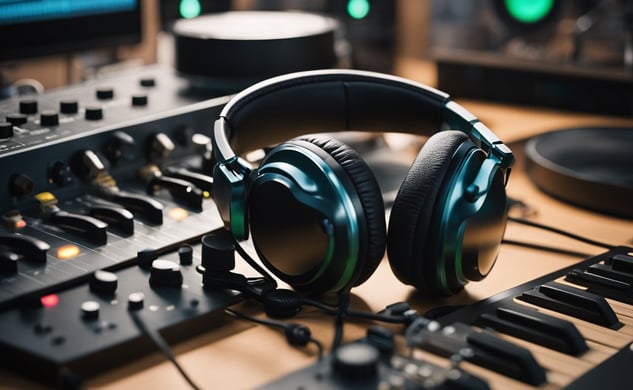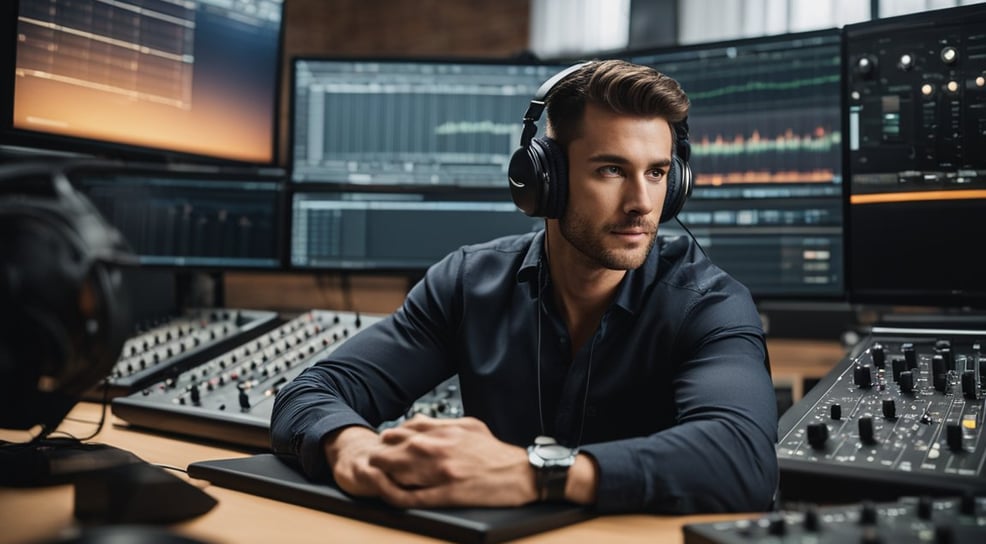Affordable Studio Headphones for Beginners: Top Picks Under $100
Searching for affordable studio headphones can be overwhelming, especially for beginners. You might wonder if it's possible to find quality options without breaking the bank. Good news: there are excellent budget-friendly studio headphones that deliver professional-grade sound without emptying your wallet.
Affordable Studio Headphones for Beginners: Top Picks Under $100
Searching for affordable studio headphones can be overwhelming, especially for beginners. You might wonder if it's possible to find quality options without breaking the bank. Good news: there are excellent budget-friendly studio headphones that deliver professional-grade sound without emptying your wallet.
These affordable options provide a great starting point for aspiring audio producers, musicians, and podcasters. They offer balanced sound, comfort for long sessions, and durability to withstand regular use.
By investing in a pair of entry-level studio headphones, you'll experience more accurate audio reproduction compared to consumer-grade models. This allows you to make better mixing and recording decisions, ultimately improving the quality of your work.
Understanding Studio Headphones
Studio headphones are specialized audio tools designed for critical listening and professional audio work. They offer accurate sound reproduction and a flat frequency response to reveal details in recordings.
Defining Studio Headphones
Studio headphones prioritize clarity and accuracy over enhanced bass or treble. They aim to present audio as neutrally as possible, allowing you to hear music and sounds as they were originally recorded. These headphones typically have a wider frequency range than consumer models, capturing both very low and very high tones.
Professional audio engineers and musicians rely on studio headphones for mixing, mastering, and recording. The neutral sound signature helps identify imperfections in audio tracks that might go unnoticed with regular headphones.
Open-Back Versus Closed-Back Headphones
Open-back studio headphones have perforated ear cups that allow air to flow through. This design creates a more natural, spacious sound but offers minimal sound isolation. You'll hear more of your surroundings, which can be beneficial for long mixing sessions.
Closed-back headphones have sealed ear cups. They provide better sound isolation, making them ideal for recording vocals or instruments. The enclosed design can slightly color the sound, but it prevents audio leakage and blocks external noise.
Your choice between open-back and closed-back depends on your specific needs and working environment.
Frequency Response and Sound Signature
Frequency response refers to the range of tones a headphone can reproduce, typically measured from 20 Hz to 20 kHz. Studio headphones aim for a flat frequency response, meaning they don't artificially boost or cut any frequencies.
The sound signature of studio headphones is designed to be neutral. This means bass isn't overpowering, mids are clear, and highs are crisp without being harsh. A neutral signature allows you to make accurate mixing decisions and hear audio as it truly is.
Some studio headphones may have a slightly emphasized high-end to help you detect sibilance or harshness in recordings. Understanding the frequency response and sound signature helps you choose headphones that suit your audio work.
Selecting Headphones on a Budget
Finding quality studio headphones doesn't have to break the bank. You can discover affordable options that deliver solid performance for recording and mixing.
Key Features to Consider
When shopping for budget studio headphones, focus on these essential features:
Sound quality: Look for balanced, accurate audio reproduction.
Comfort: Ensure the headphones fit well for long sessions.
Durability: Choose models with sturdy construction.
Frequency response: Aim for a wide range, typically 20Hz-20kHz.
Impedance: Lower impedance (32-64 ohms) works well for most devices.
Closed-back designs offer better isolation, while open-back can provide a more natural sound. Consider your specific needs and recording environment when choosing.
Price Ranges and Expectations
You can find decent studio headphones in these price brackets:
Under $50: Basic models with acceptable sound quality
$50-$100: Improved audio accuracy and build quality
In the lower range, expect plastic construction and adequate performance. As you approach $100, you'll find better materials, more comfortable designs, and clearer sound reproduction.
Some brands offer professional features at budget-friendly prices. You might sacrifice some durability or premium materials, but many affordable options still deliver reliable performance.
Best Cheap Studio Headphones
Here are some top picks for budget-conscious buyers:
Audio-Technica ATH-M20x: Solid all-rounder under $50
Sony MDR7506: Industry standard, often available for under $100
AKG K240 Studio: Semi-open design, great for mixing
Sennheiser HD 280 PRO: Durable and comfortable
Shure SRH440: Clear, balanced sound at a reasonable price
These models offer good value for beginners and hobbyists. They provide a balance of audio quality, comfort, and durability without a hefty price tag.
Remember to read user reviews and compare specifications before making your final decision. Your choice should align with your specific needs and budget constraints.
The Role of Headphones in Audio Production
Headphones play a vital role in various stages of audio production. They provide accurate sound isolation and detailed monitoring capabilities essential for creating professional-quality audio.
Mixing and Mastering
In mixing and mastering, headphones offer a consistent listening environment. You can hear subtle details that might be missed on speakers due to room acoustics.
High-quality studio headphones reveal nuances in EQ, compression, and stereo imaging. This allows you to make precise adjustments to your mix.
Headphones are especially useful for checking low-end balance and identifying phase issues. They also help you spot unwanted artifacts or background noise that may be masked by speaker playback.
Tracking and Monitoring
During recording sessions, headphones are crucial for performers and engineers alike. They allow musicians to hear the backing track or click clearly while recording.
For vocalists, headphones provide pitch reference and help maintain proper microphone technique. Instrumentalists can monitor their performance in relation to other tracks.
Engineers use headphones to check signal quality and detect any unwanted sounds during tracking. This ensures clean recordings and minimizes the need for extensive editing later.
Casual Listening Versus Critical Listening
Studio headphones differ from consumer models in their focus on accuracy rather than enhanced bass or treble. You'll hear a flatter, more neutral frequency response.
Critical listening requires headphones that reveal flaws in your mix. Consumer headphones may sound pleasing but can mask issues that become apparent on other systems.
When switching between casual and critical listening, be aware of how different headphones color the sound. This helps you create mixes that translate well across various playback devices.
Comfort and Durability
Comfort and durability are crucial factors when choosing studio headphones for beginners. These aspects directly impact your listening experience and the longevity of your investment.
The Importance of Comfort
Comfortable headphones enhance your ability to focus on audio tasks for extended periods. Look for models with padded headbands and soft, breathable earpads. Memory foam cushions can mold to your ears, providing a personalized fit.
Adjustable headbands allow you to find the perfect position, reducing pressure on your head. Some headphones offer swiveling earcups, which can improve comfort and make one-ear monitoring easier.
Consider the weight of the headphones. Lighter models typically cause less fatigue during long sessions. However, ensure that lightweight doesn't mean flimsy construction.
Finding Durable Designs
Durable headphones save you money in the long run and provide consistent performance. Examine the build quality of potential purchases. Metal components often outlast plastic ones, especially in high-stress areas like hinges and headband extenders.
Look for detachable cables. These allow for easy replacement if damaged, extending the life of your headphones. Some models offer reinforced cable entry points to prevent wear and tear.
Check for replaceable earpads. Over time, padding can wear down or become unhygienic. The ability to swap out earpads keeps your headphones fresh and functional.
Robust carry cases or pouches protect your headphones during transport. This extra layer of protection is particularly valuable for beginners who may be less experienced in handling audio equipment.
Noteworthy Models for Beginners
Several affordable studio headphone models offer excellent sound quality and comfort for aspiring audio professionals and music enthusiasts. These options provide a balance of performance and value to help you start your audio journey.
AKG K240 Studio and AKG K361
The AKG K240 Studio headphones are a classic choice for beginners. They feature a semi-open design that provides a wide soundstage and natural sound reproduction. The K240 Studio offers a comfortable fit with its self-adjusting headband and large ear cups.
AKG's K361 model is a newer closed-back option. These headphones deliver accurate audio with deep bass response. The K361's foldable design makes them portable and convenient for on-the-go use. Their lightweight construction ensures comfort during long listening sessions.
Both models offer professional-grade sound at an accessible price point. The K240 Studio excels in studio environments, while the K361 is versatile for both studio and mobile use.
Audio-Technica ATH-M20x and ATH-M50x
Audio-Technica's ATH-M20x headphones are an excellent entry-level option. They provide clear sound across all frequencies and good isolation from external noise. The ATH-M20x is comfortable to wear for extended periods, thanks to its padded headband and ear cups.
The ATH-M50x is a step up in Audio-Technica's lineup. These headphones are widely used by professionals and enthusiasts alike. They offer exceptional clarity, deep bass, and a wide frequency response. The ATH-M50x features detachable cables and foldable ear cups for added convenience.
Both models are built to last with durable materials. The ATH-M20x is ideal for beginners on a tight budget, while the ATH-M50x offers pro-level performance for those willing to invest a bit more.
Sennheiser HD 280 Pro and HD 25
Sennheiser's HD 280 Pro headphones are known for their accurate sound reproduction and excellent noise isolation. They have a closed-back design that's perfect for recording and monitoring. The HD 280 Pro's robust build quality ensures they can withstand the rigors of daily studio use.
The Sennheiser HD 25 is a favorite among DJs and broadcast professionals. These on-ear headphones are lightweight and durable. They provide punchy bass and clear mids and highs. The HD 25's split headband design allows for easy single-ear monitoring.
Both models offer Sennheiser's renowned sound quality. The HD 280 Pro is better suited for studio work, while the HD 25 shines in live performance and DJ settings.
Other Notable Mentions
The Beyerdynamic DT770 Pro offers stellar sound quality and comfort. It's available in different impedance versions to suit various audio setups.
Sony's MDR-7506 is a industry standard for its neutral sound signature and reliability. These headphones have been used in professional settings for decades.
The Yamaha HPH-MT5 provides accurate monitoring capabilities at an affordable price point. Its closed-back design offers good isolation for recording tasks.
Samson's SR850 is a budget-friendly semi-open option. It delivers a wide soundstage and detailed audio reproduction, making it suitable for mixing and critical listening.
